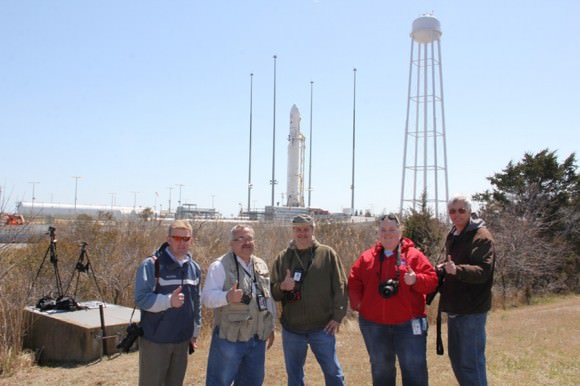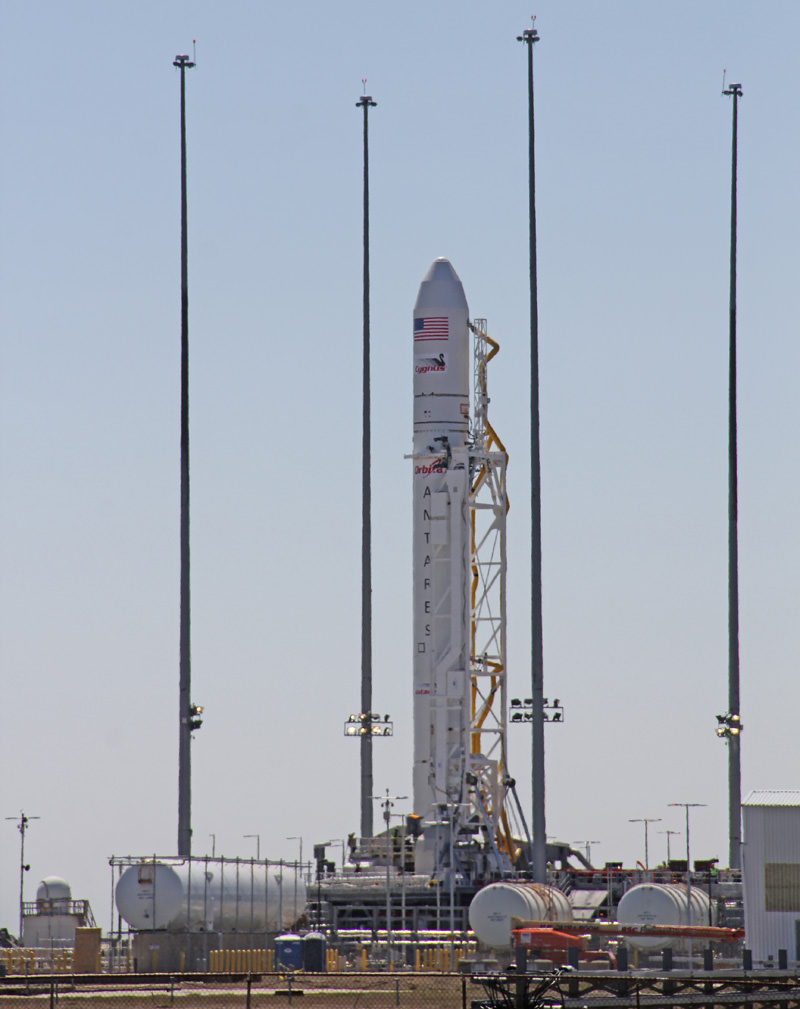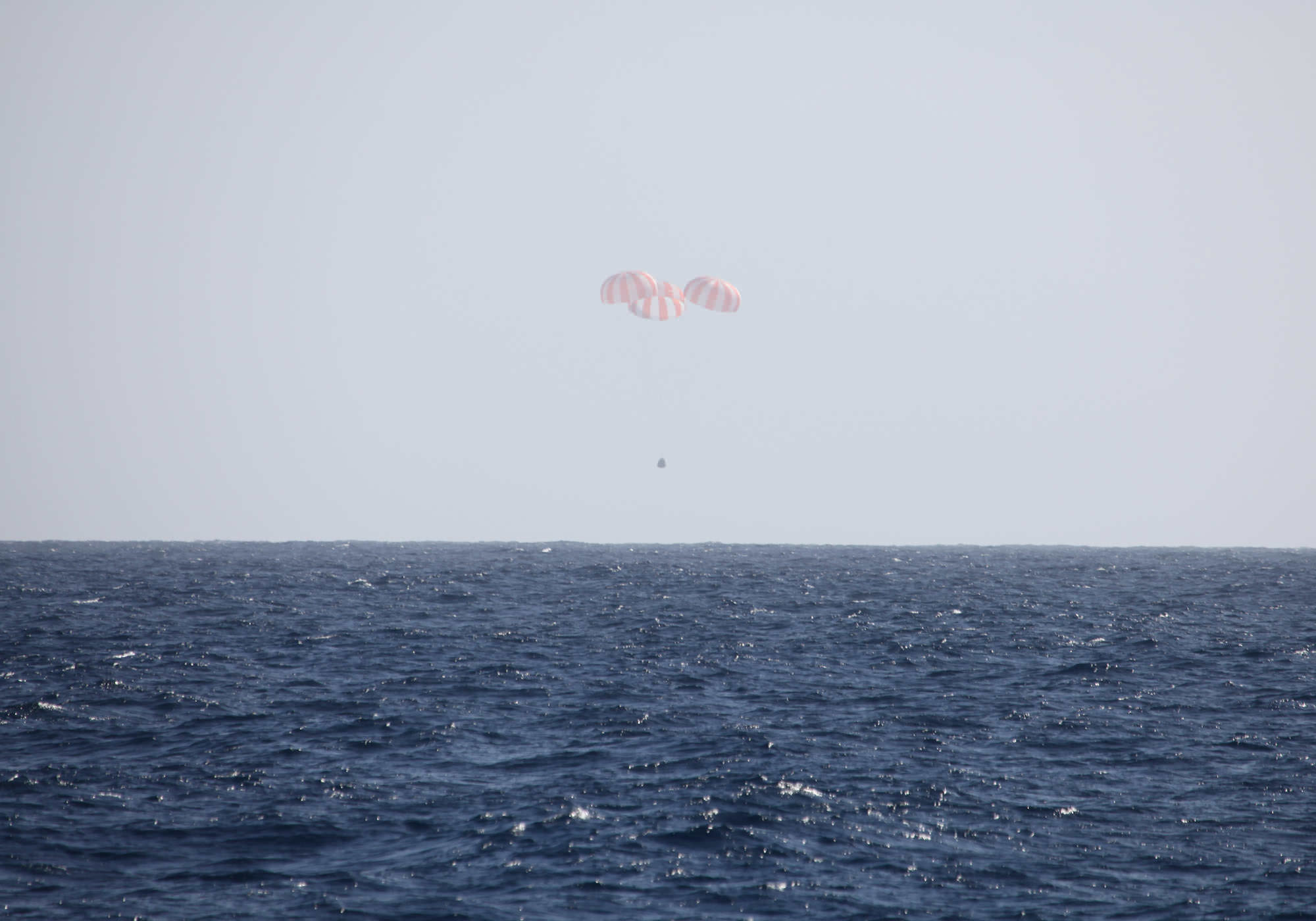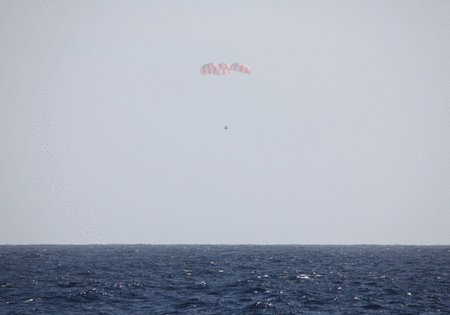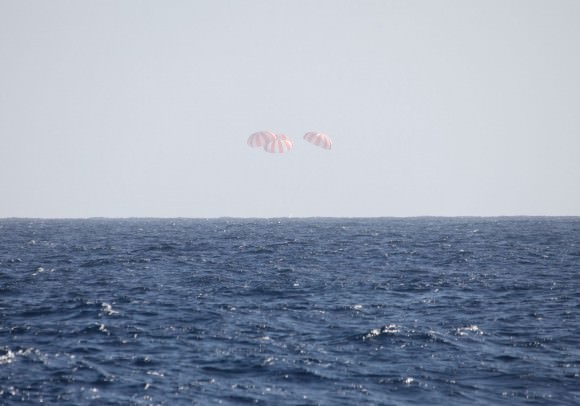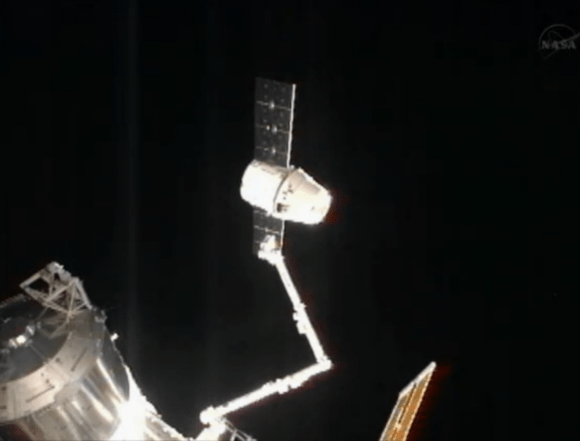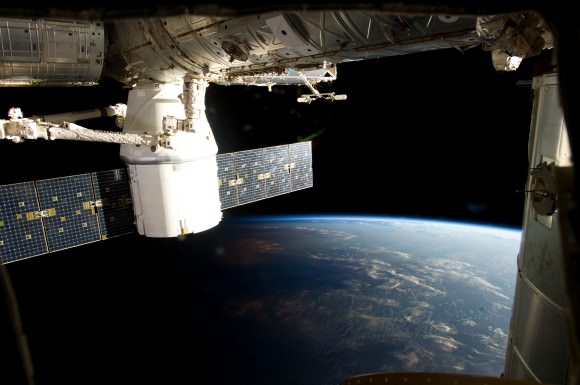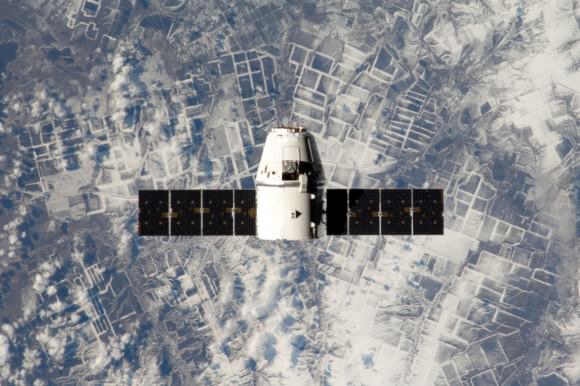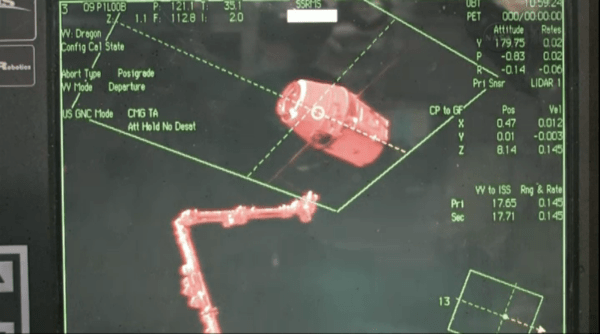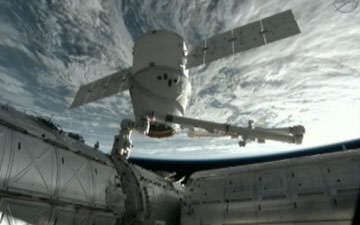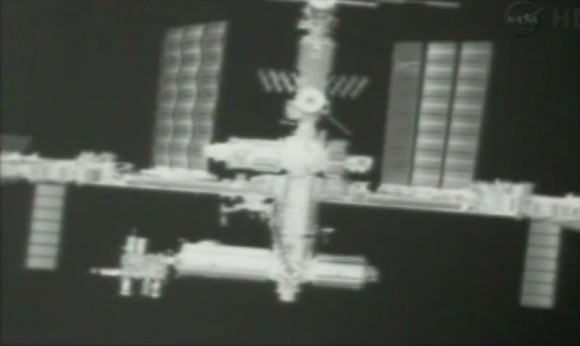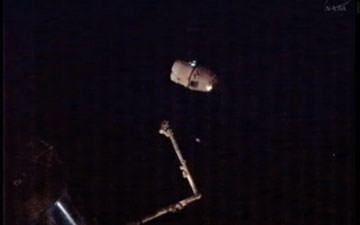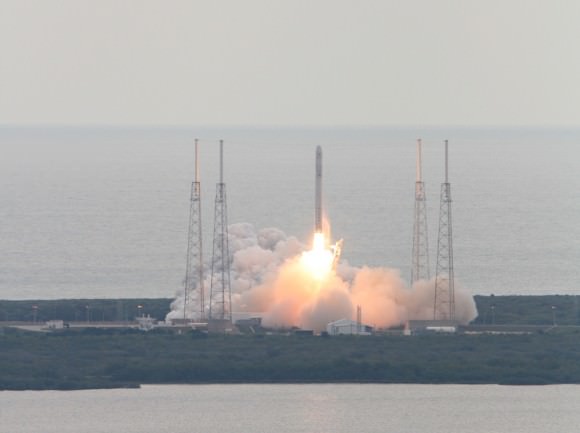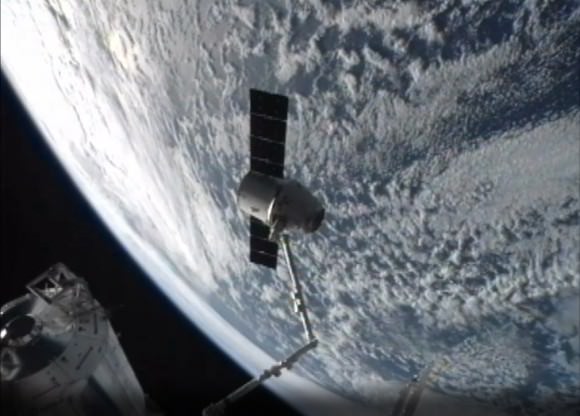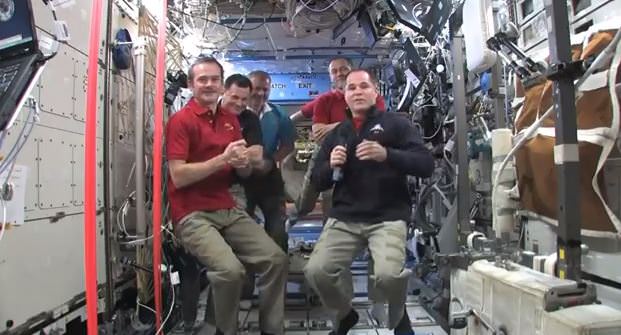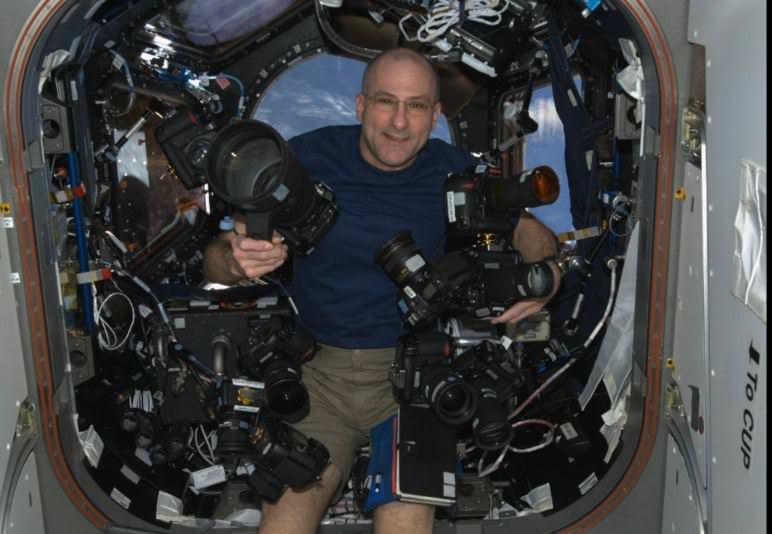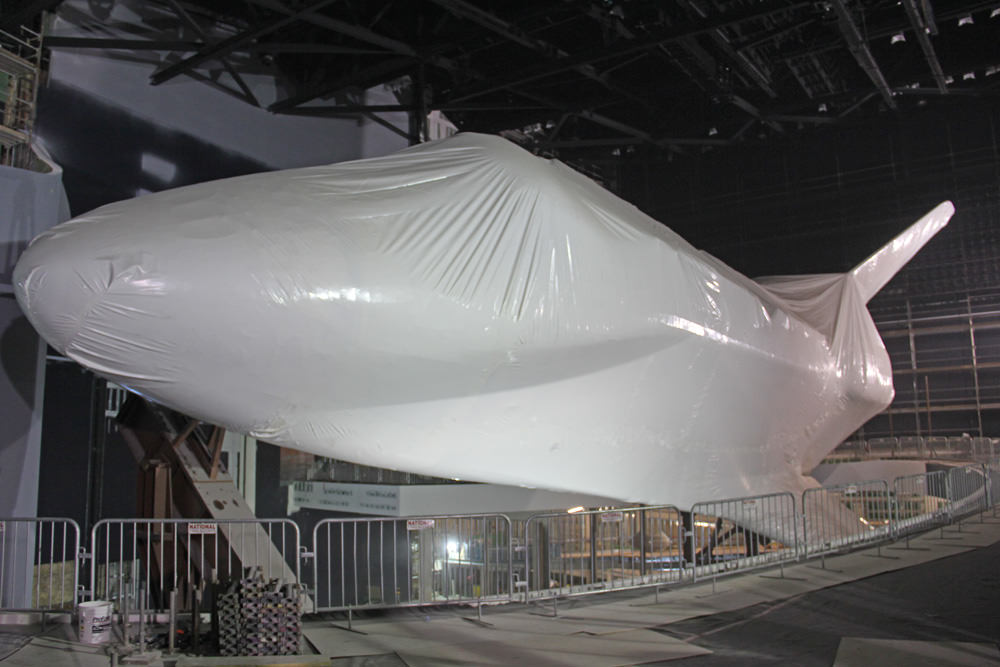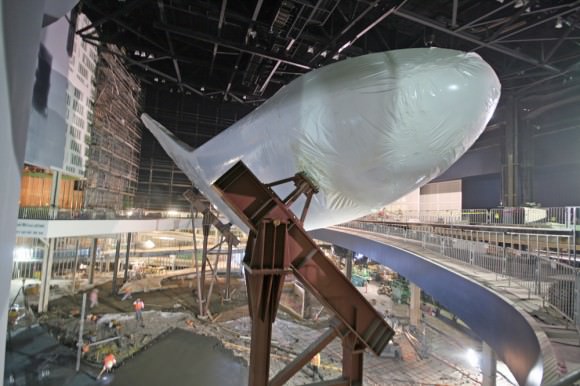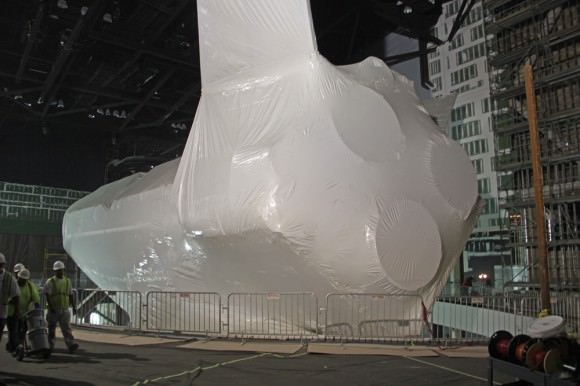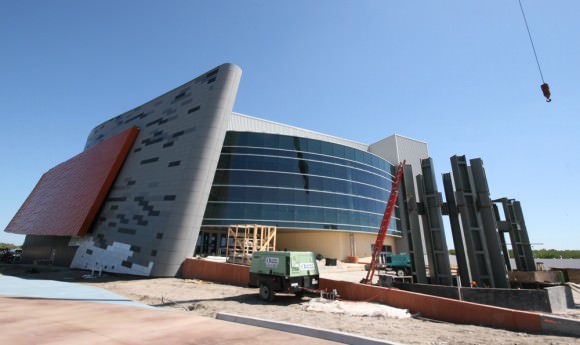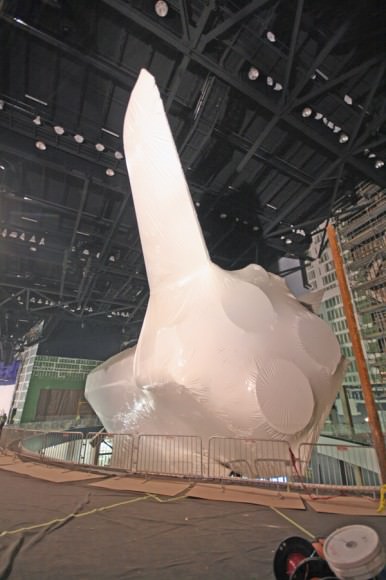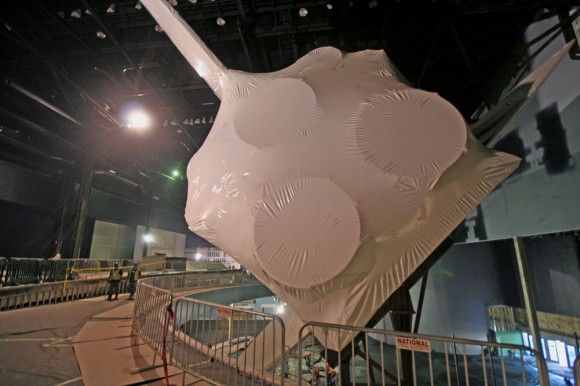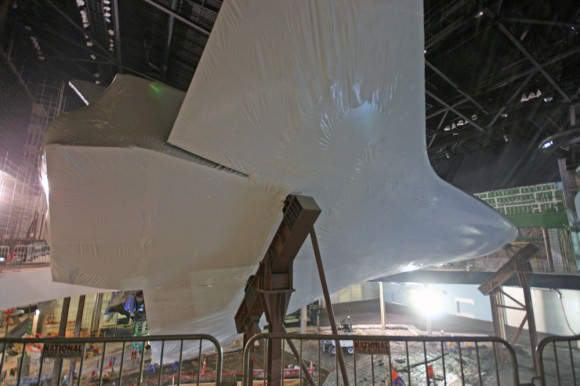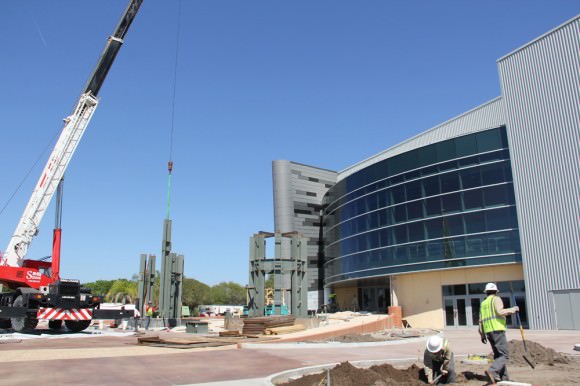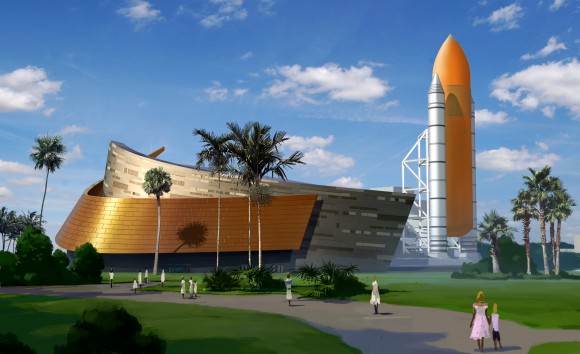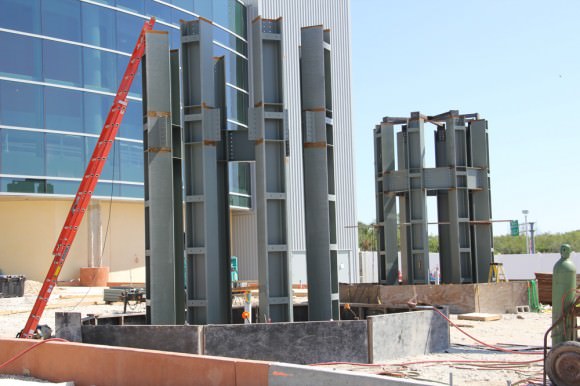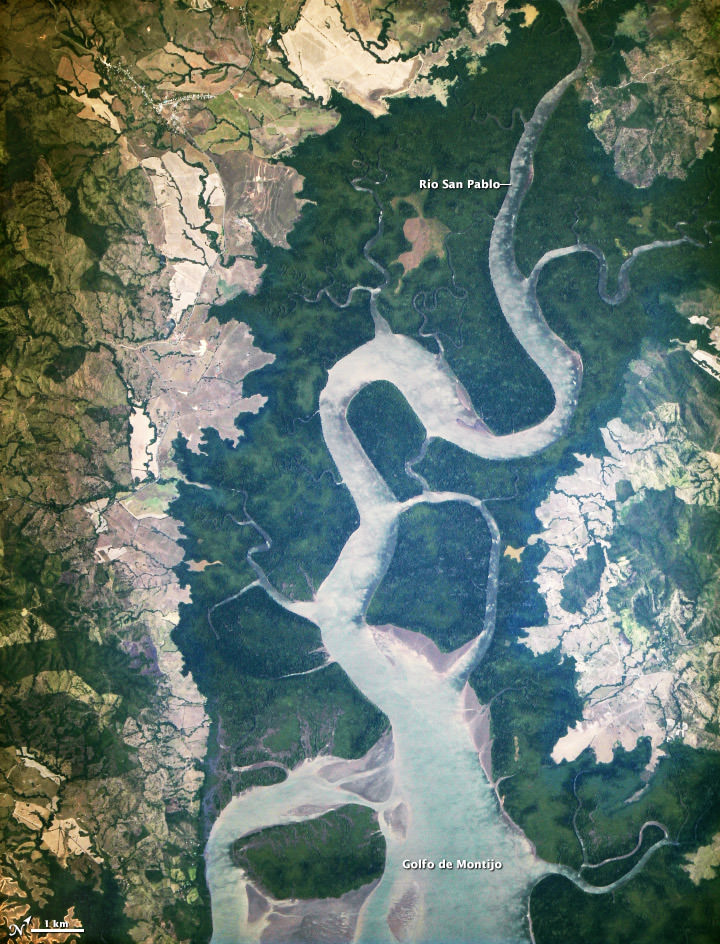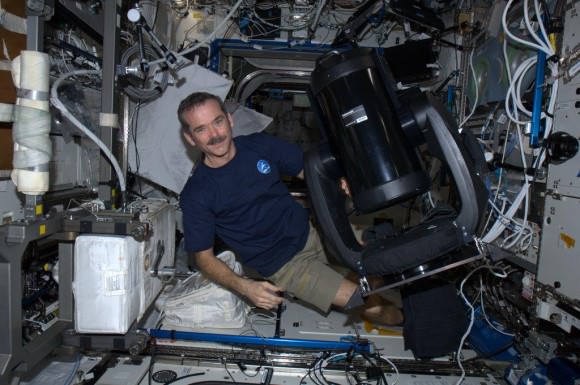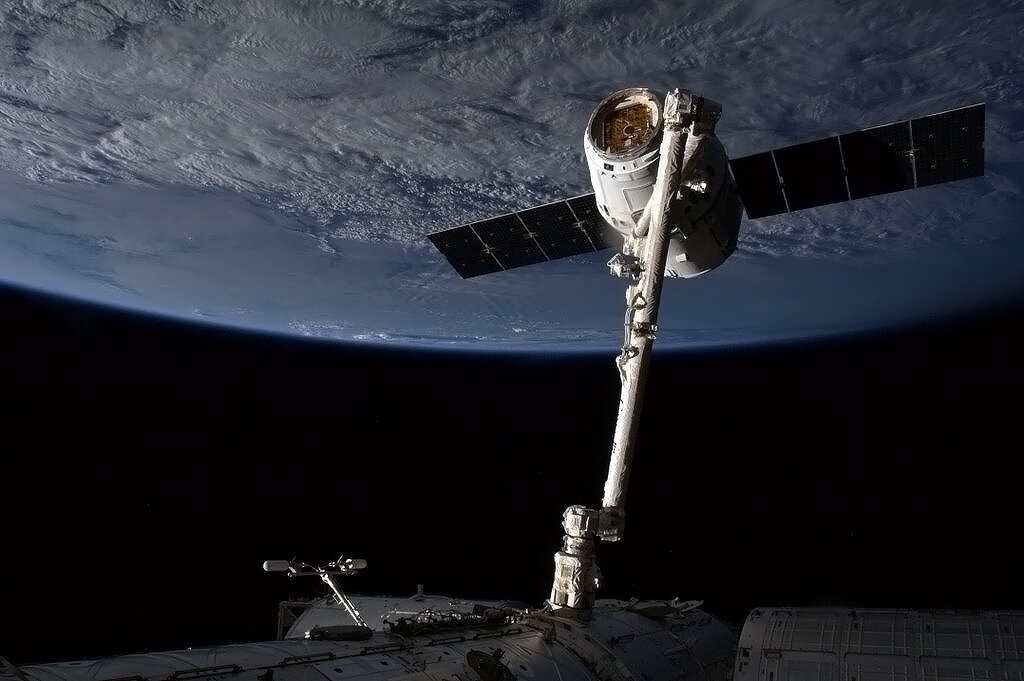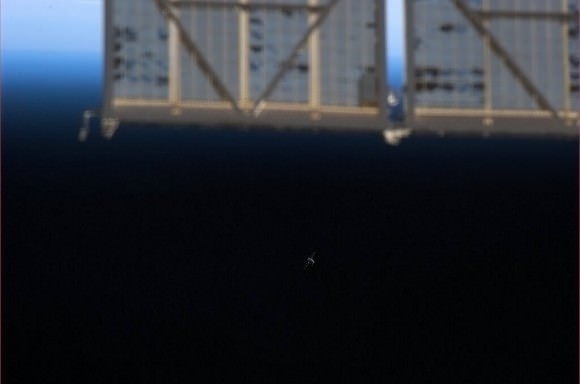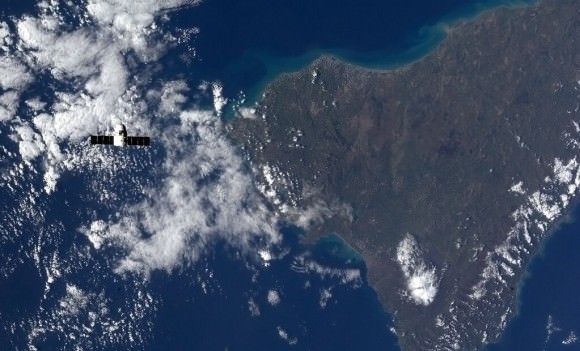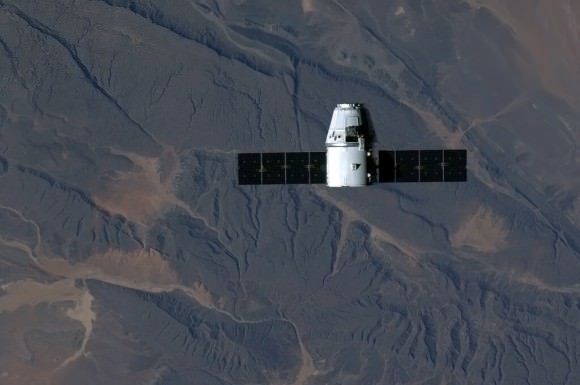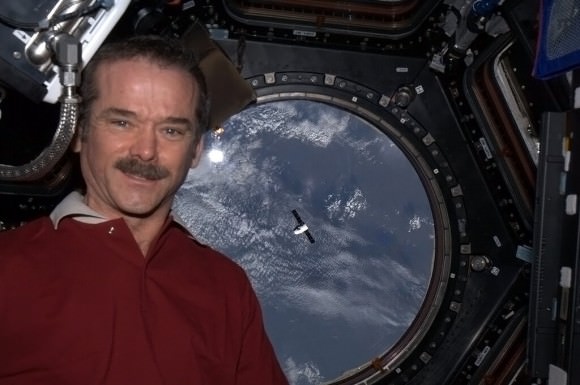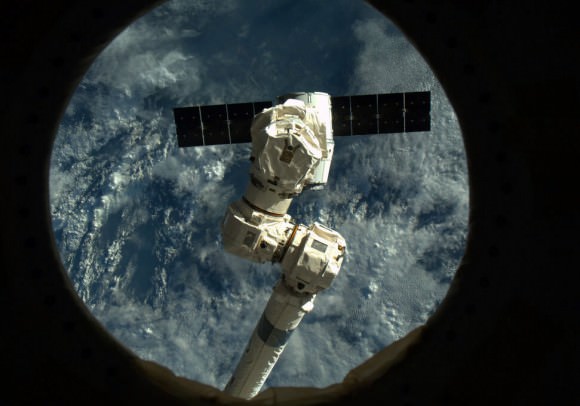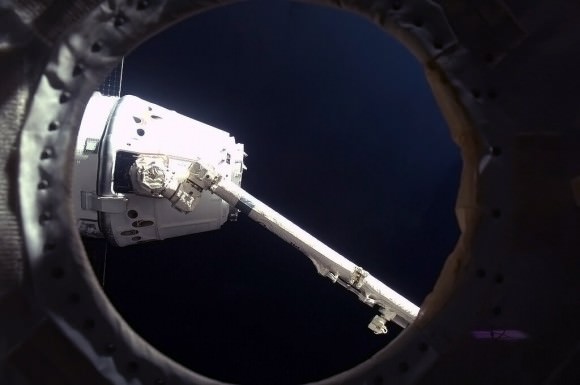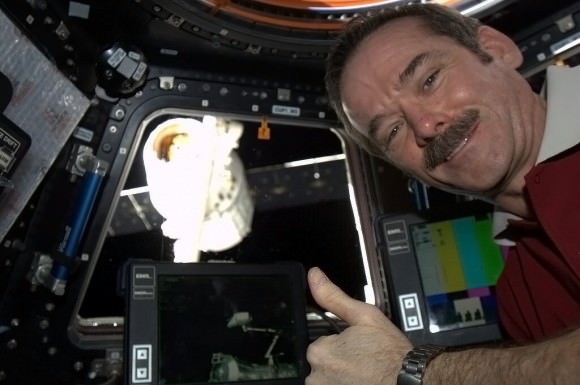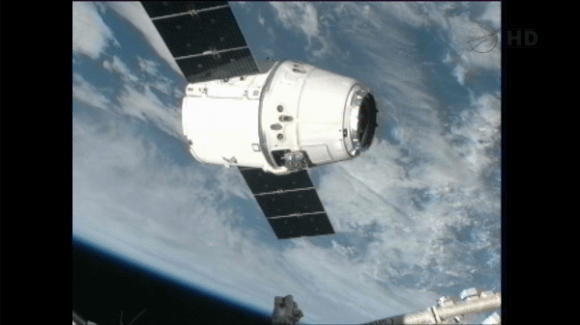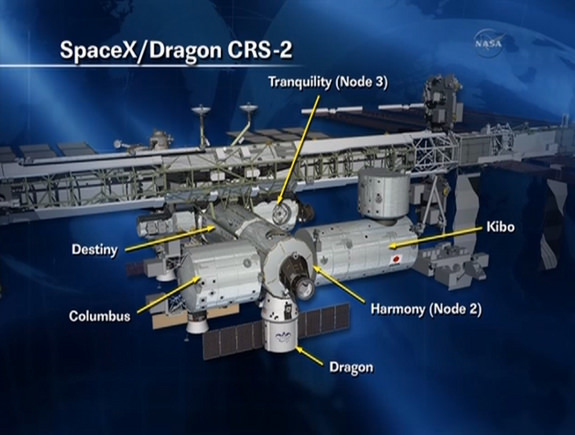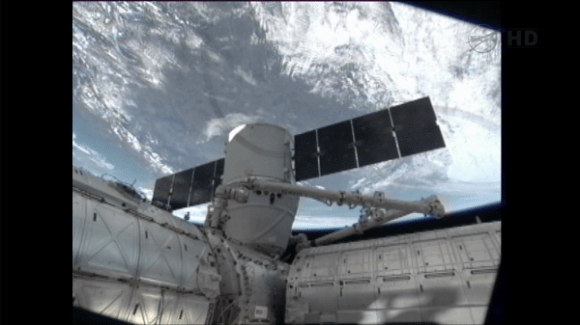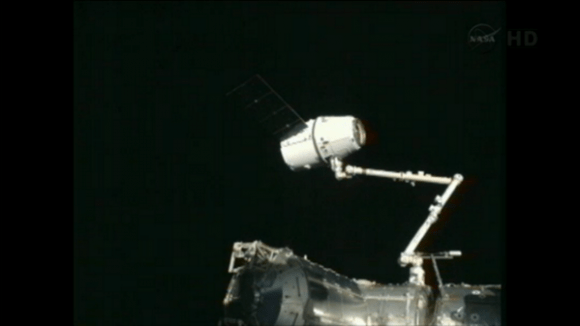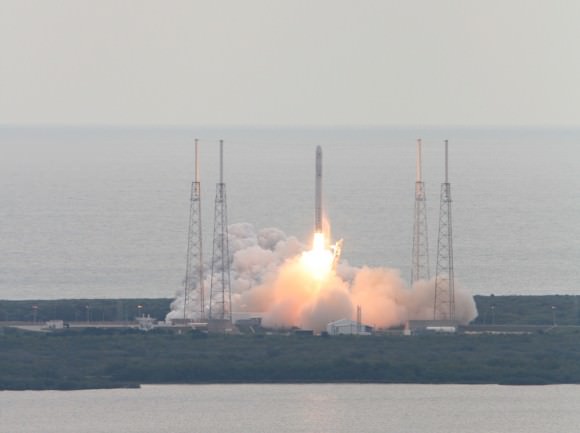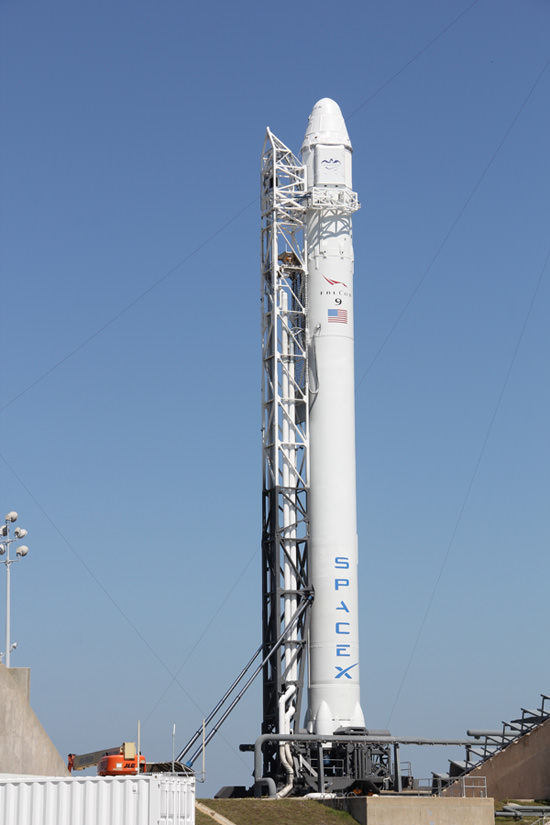1st fully integrated Antares rocket – decaled with huge American flag – stands firmly erect at seaside Launch Pad 0-A at NASA’s Wallops Flight Facility on 6 April 2013 following night time rollout. Maiden Antares test launch is scheduled for 17 April 2013. Later operational flights are critical to resupply the ISS. Credit: Ken Kremer (kenkremer.com).
See Antares rollout and erection photo gallery below[/caption]
For the first time ever, the new and fully integrated commercial Antares rocket built by Orbital Sciences was rolled out to its oceanside launch pad on a rather chilly Saturday morning (April 6) and erected at the very edge of the Eastern Virginia shoreline in anticipation of its maiden launch slated for April 17.
The inaugural liftoff of the privately developed two stage rocket is set for 5 p.m. from the newly constructed launch pad 0-A at the Mid-Atlantic Regional Spaceport (MARS) at NASA’s Wallops Flight Facility in Virginia.
And Universe Today was there! See my photo gallery herein.
Antares is the most powerful rocket ever to ascend near major American East Coast population centers, unlike anything before. The launch is open to the public and is generating buzz.
And this is one very cool looking rocket.
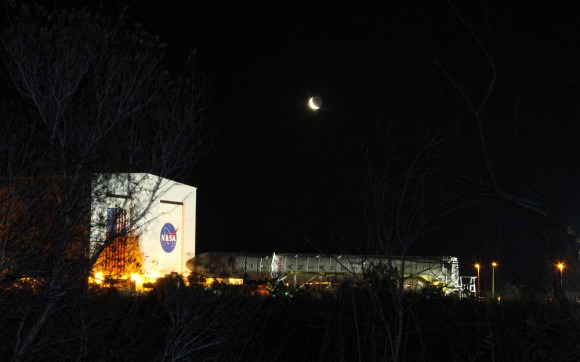
The maiden April 17 launch is actually a test flight dubbed the A-One Test Launch Mission.
The goal of the A-One mission is to validate that Antares is ready to launch Orbital‘s Cygnus capsule on a crucial docking demonstration and resupply mission to the International Space Station (ISS) as soon as this summer.
The 1 mile horizontal rollout trek of the gleaming white rocket from the NASA integration hanger to the pad on a specially designed trailer began in the dead of a frosty, windy night at 4:30 a.m. – and beneath a picturesque moon.
“We are all very happy and proud to get Antares to the pad today for the test flight,” Orbital ground operations manager Mike Brainard told Universe Today in an interview at Launch Complex 0-A.
The rocket was beautifully decaled with a huge American flag as well as the Antares, Cygnus and Orbital logos.
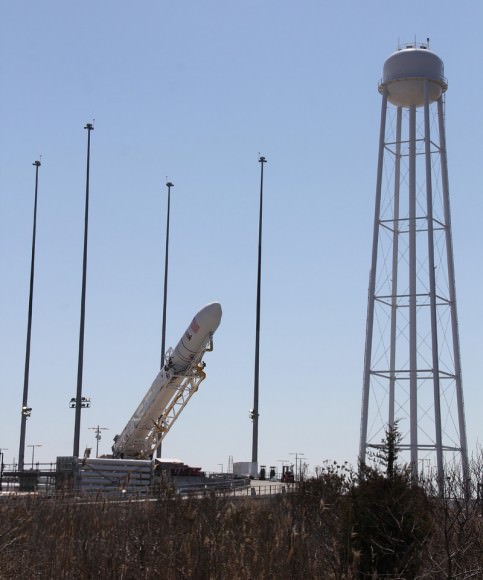
Antares was transported aboard the Transporter/Erector/Launcher (TEL), a multifunctional, specialized vehicle that also slowly raised the rocket to a vertical position on the launch pad a few hours later, starting at about 1 p.m. under clear blue skies.
This first ever Antares erection took about 30 minutes. The lift was postponed for several hours after arriving at the pad as Orbital personal monitored the continually gusting winds approaching the 29 knot limit and checked all pad and rocket systems to insure safety.
The TEL vehicle also serves as a support interface between the 133-foot Antares and the range of launch complex systems.
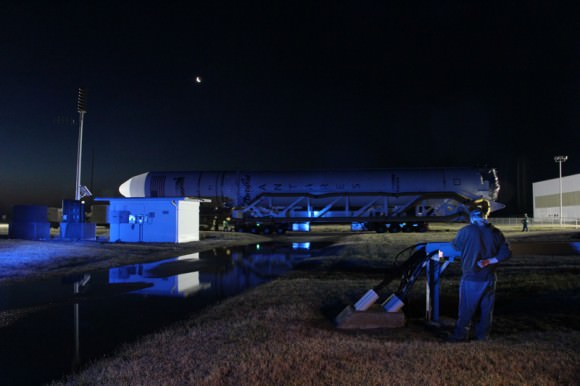
Now that Antares stands vertical, “We are on a clear path to a launch date of April 17, provided there are no significant weather disruptions or major vehicle check-out delays between now and then,” said Mr. Michael Pinkston, Orbitals Antares Program Manager.
Antares is a medium class rocket similar to the Delta II and SpaceX Falcon 9.
For this test flight Antares will boost a simulated version of the Cygnus carrier – known as a mass simulator – into a target orbit of 250 x 300 kilometers and inclined 51.6 degrees.
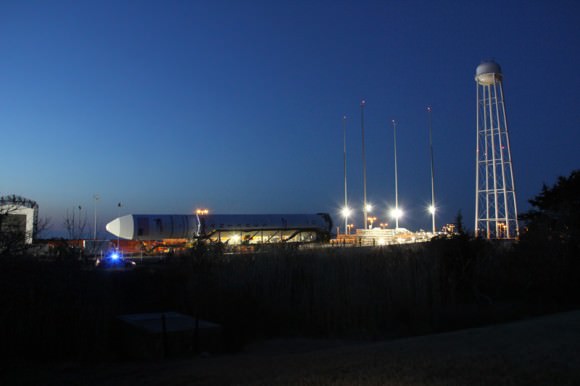
The Antares first stage is powered by dual liquid fueled AJ26 first stage rocket engines that generate a combined total thrust of some 680,000 lbs. The upper stage features a Castor 30 solid rocket motor with thrust vectoring. Antares can loft payloads weighing over 5000 kg to LEO.
The Antares/Cygnus system was developed by Orbital Sciences Corp under NASA’s Commercial Orbital Transportation Services (COTS) program to replace the ISS cargo resupply capability previously tasked to NASA’s now retired Space Shuttle fleet.
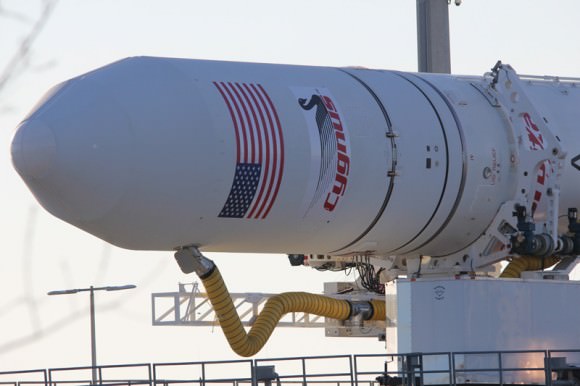
Orbital’s Antares/Cygnus system is similar in scope to the SpaceX Falcon 9/Dragon system. Both firms won lucrative NASA contracts to deliver approximately 20,000 kilograms of supplies and equipment to the ISS.
The goal of NASA’s COTS initiative is to achieve safe, reliable and cost-effective transportation to and from the ISS and low-Earth orbit (LEO).
Orbital will launch at least eight Antares/Cygnus resupply missions to the ISS at a cost of $1.9 Billion
The maiden Antares launch has been postponed by about 2 years due to delays in laiunch pad construction and validating the rocket and engines for flight- similar in length to the start up delays experienced by SpaceX for Falcon 9 and Dragon.
Read my prior Antares story detailing my tour of the launch complex following the successful 29 sec hot-fire engine test that cleared the path for the April 17 liftoff – here & here.
Watch for my continuing reports through liftoff of the Antares A-One Test flight.
…………….
Learn more about Antares, SpaceX, Curiosity and NASA missions at Ken’s upcoming lecture presentations:
April 20/21 : “Curiosity and the Search for Life on Mars – (in 3-D)”. Plus Orion, SpaceX, Antares, the Space Shuttle and more! NEAF Astronomy Forum, Suffern, NY
April 28: “Curiosity and the Search for Life on Mars – (in 3-D)”. Plus the Space Shuttle, SpaceX, Antares, Orion and more. Washington Crossing State Park, Titusville, NJ, 130 PM

